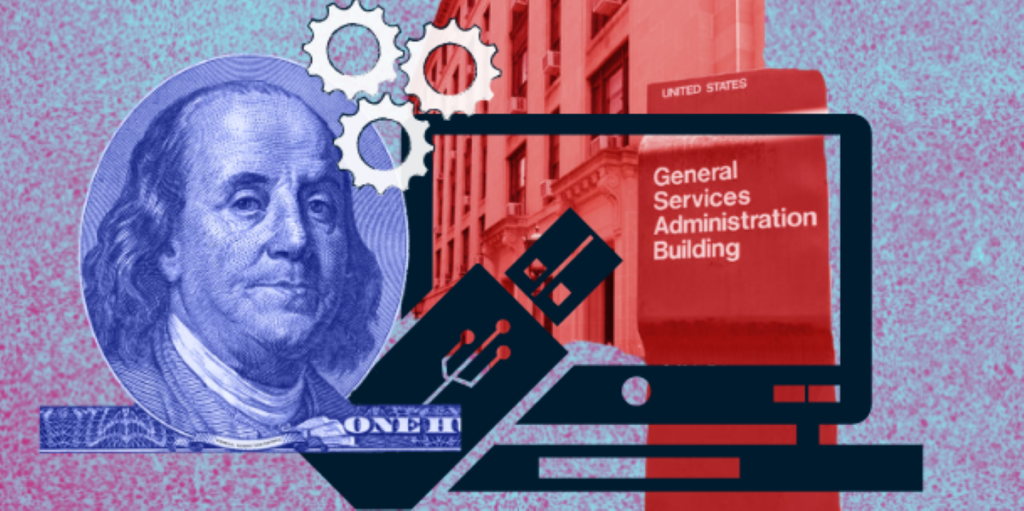
The General Services Administration is trying to put emerging technologies on the radar instead of having them sit below the radar.
To do that, GSA’s Federal Acquisition Service has a new program to identify and research which technologies they need to prepare for in the next 3-to-5-to-7 years.
Michael Berkholtz, a senior manager for technology lifecycle services FAS, said the emerging technology radar is an internal program started about 18 months ago as a way to bring some standardization to how GSA focuses on the technologies that agencies potentially will need in the not-too-distant future.
“We had so many different ways to define what an emerging technology is, and we have 21 different contracts in the IT Category, so where do you actually want to start your research? How do we start thinking about what technologies are relevant? We had to look for a way to focus our efforts,” Berkholtz said in an interview with Federal News Network. “This idea of a radar is something, I think, a couple of industries use. You can find consulting groups that use it as well as large commercial firms. We think of it in terms of technology and technology maturity, how do we define our own business space?”
Through the framework, GSA reviews technology for its maturity based several perspectives:
- Technology that is coming into a government or private sector lab, mainly through concept papers.
- Is there any business value for this technology?
- What are commercial companies doing today and how are they experimenting with it? They aren’t necessarily putting it into their operating model, but
- Where technology is entering into the federal space, maybe through pilot programs. “That is where we really want to understand use cases, business models and who are the vendors in that space. So that we are looking at our contracts and saying do we have the right scope available, do we have the vendors who in this space and is there a change to the business model we have to be worried about? Then we start going through analysis as it relates to that,” Berkholtz said at the Federal Networks 2024 conference, sponsored by TeleStrategies and Suss Consulting.
A good example of how GSA applied this strategy came last summer when it issued two requests for information around software bill-of-materials (SBOM) and post-quantum cryptography.
Berkholtz said the RFIs helped FAS learn more about the vendors and what they are currently doing in these technology spaces.
Promise of virtual reality growing
Among the other technologies on the tech radar include artificial intelligence, cybersecurity, communications networks, virtual reality, augmented reality and other technologies that are most relevant to a broad swath of the government.
“We look at what the national labs are doing. We’ll go look at what’s coming out of Defense Innovation Unit. We also look at the Homeland Security Department’s Science and Technology directorate. What does their research agenda look like?” he said. “We start seeing where’s the federal research dollars going to and what might be most promising across the board. Then we also look at private sources. What is industry investing in? We look at, for example, MIT. We’ve sent people their conferences. At Stanford University and other places, where is the research coming from? We start looking at that as a proxy for what technology is maturing. Where do investors see opportunities? And then we ask, ‘is this going to be relevant to us in the federal space?’”
Berkholtz said GSA is seeing a lot of interest and promise in virtual reality and how to apply it to training scenarios.
While it’s taken a little while for agencies and industry to figure out where VR fits into their technology stack, the Defense Department and others are starting to identify the use cases.
Quantum sensors, like VR was five years ago, is another technology where the market is starting to see some interest. Berkholtz said GSA is seeing some demonstrations of a capability where the user can actually use a quantum sensor to replace GPS navigation.
GSA’s development of the tech radar started in early 2023 with a series of meetings trying to create the outline of the tool. The agency worked with the National Institute of Standards and Technology and others to ensure the tech radar was going in the right direction.
Berkholtz said he expects the tool to continue to evolve.
“It has to be an iterative process. Functionally, we use the term radar to track as technology moves. In this case, as we identify technology that’s maturing, we look at our current family of contracts, say, ‘Hey, these couple of technologies look pretty relevant. They may not be ready now, but can you incorporate those under the scope you’ve got? And if not, do we need to?’” he said. “It’s a constantly an evolving tool as we learn more about the technology and what our federal customers may need today or in the future.”
Copyright
© 2024 Federal News Network. All rights reserved. This website is not intended for users located within the European Economic Area.







